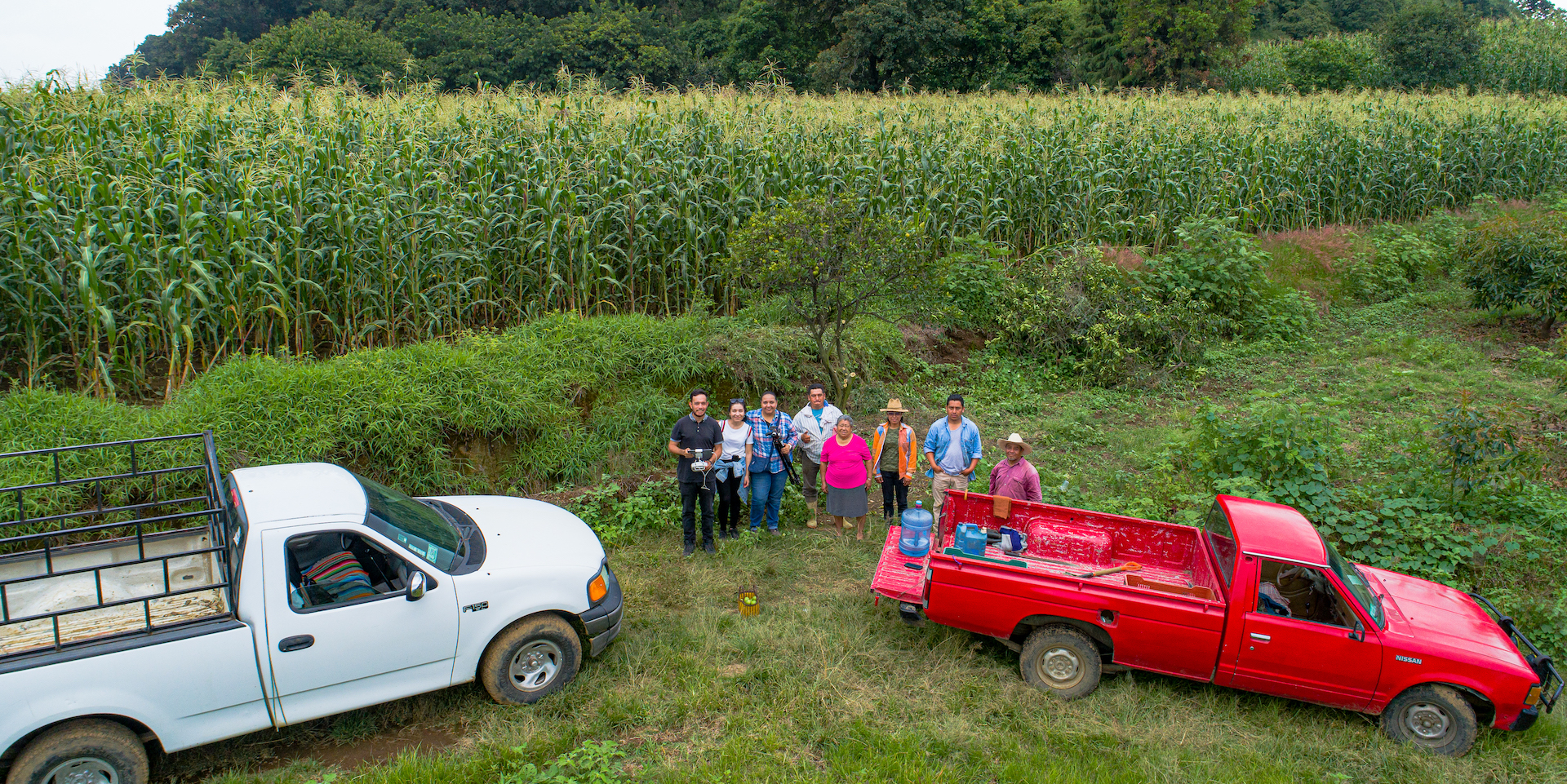More than 11,000 scientists signed on to a recent report showing that planet Earth is facing a climate emergency and the United Nations warned that the world is on course for a 3.2 degree spike by 2100, even if 2015 Paris Agreement commitments are met.
Agriculture, forestry, and land-use change are implicated in roughly a quarter of global greenhouse gas emissions.
Agriculture also offers opportunities to mitigate climate change and to help farmers — particularly smallholders in developing and emerging economies who have been hardest hit by hot weather and reduced, more erratic rainfall.
Most of CIMMYT’s work relates to climate change, helping farmers adapt to shocks while meeting the rising demand for food and, where possible, reducing emissions.

Climate-resilient crops and farming practices
53 million people are benefiting from drought-tolerant maize. Drought-tolerant maize varieties developed using conventional breeding provide at least 25% more grain than other varieties in dry conditions in sub-Saharan Africa — this represents as much as 1 ton per hectare more grain on average. These varieties are now grown on nearly 2.5 million hectares, benefiting an estimated 6 million households or 53 million people in the continent. One study shows that drought-tolerant maize can provide farming families in Zimbabwe an extra 9 months of food at no additional cost. The greatest productivity results when these varieties are used with reduced or zero tillage and keeping crop residues on the soil, as was demonstrated in southern Africa during the 2015-16 El Niño drought. Finally, tolerance in maize to high temperatures in combination with drought tolerance has a benefit at least twice that of either trait alone.
Wheat yields rise in difficult environments. Nearly two decades of data from 740 locations in more than 60 countries shows that CIMMYT breeding is pushing up wheat yields by almost 2% each year — that’s some 38 kilograms per hectare more annually over almost 20 years — under dry or otherwise challenging conditions. This is partly through use of drought-tolerant lines and crosses with wild grasses that boost wheat’s resilience. An international consortium is applying cutting-edge science to develop climate-resilient wheat. Three widely-adopted heat and drought-tolerant wheat lines from this work are helping farmers in Pakistan, a wheat powerhouse facing rising temperatures and drier conditions; the most popular was grown on an estimated 40,000 hectares in 2018.
Climate-smart soil and fertilizer management. Rice-wheat rotations are the predominant farming system on more than 13 million hectares in the Indo-Gangetic Plains of South Asia, providing food and livelihoods for hundreds of millions. If farmers in India alone fine-tuned crop fertilizer dosages using available technologies such as cellphones and photosynthesis sensors, each year they could produce nearly 14 million tons more grain, save 1.4 million tons of fertilizer, and cut CO2-equivalent greenhouse gas emissions by 5.3 million tons. Scientists have been studying and widely promoting such practices, as well as the use of direct seeding without tillage and keeping crop residues on the soil, farming methods that help capture and hold carbon and can save up to a ton of CO2 emissions per hectare, each crop cycle. Informed by CIMMYT researchers, India state officials seeking to reduce seasonal pollution in New Delhi and other cities have implemented policy measures to curb the burning of rice straw in northern India through widespread use of zero tillage.

Measuring climate change impacts and savings
In a landmark study involving CIMMYT wheat physiologists and underlining nutritional impacts of climate change, it was found that increased atmospheric CO2 reduces wheat grain protein content. Given wheat’s role as a key source of protein in the diets of millions of the poor, the results show the need for breeding and other measures to address this effect.
CIMMYT scientists are devising approaches to gauge organic carbon stocks in soils. The stored carbon improves soil resilience and fertility and reduces its emissions of greenhouse gases. Their research also provides the basis for a new global soil information system and to assess the effectiveness of resource-conserving crop management practices.

Managing pests and diseases
Rising temperatures and shifting precipitation are causing the emergence and spread of deadly new crop diseases and insect pests. Research partners worldwide are helping farmers to gain an upper hand by monitoring and sharing information about pathogen and pest movements, by spreading control measures and fostering timely access to fungicides and pesticides, and by developing maize and wheat varieties that feature genetic resistance to these organisms.
Viruses and moth larvae assail maize. Rapid and coordinated action among public and private institutions across sub-Saharan Africa has averted a food security disaster by containing the spread of maize lethal necrosis, a viral disease which appeared in Kenya in 2011 and quickly moved to maize fields regionwide. Measures have included capacity development with seed companies, extension workers, and farmers the development of new disease-resilient maize hybrids.
The insect known as fall armyworm hit Africa in 2016, quickly ranged across nearly all the continent’s maize lands and is now spreading in Asia. Regional and international consortia are combating the pest with guidance on integrated pest management, organized trainings and videos to support smallholder farmers, and breeding maize varieties that can at least partly resist fall armyworm.
New fungal diseases threaten world wheat harvests. The Ug99 race of wheat stem rust emerged in eastern Africa in the late 1990s and spawned 13 new strains that eventually appeared in 13 countries of Africa and beyond. Adding to wheat’s adversity, a devastating malady from the Americas known as “wheat blast” suddenly appeared in Bangladesh in 2016, causing wheat crop losses as high as 30% on a large area and threatening to move quickly throughout South Asia’s vast wheat lands.
In both cases, quick international responses such as the Borlaug Global Rust Initiative, have been able to monitor and characterize the diseases and, especially, to develop and deploy resistant wheat varieties.

Partners and funders of CIMMYT’s climate research
A global leader in publicly-funded maize and wheat research and related farming systems, CIMMYT is a member of CGIAR and leads the South Asia Regional Program of the CGIAR Research Program on Climate Change, Agriculture and Food Security (CCAFS).
CIMMYT receives support for research relating to climate change from national governments, foundations, development banks and other public and private agencies. Top funders include CGIAR Research Programs and Platforms, the Bill & Melinda Gates Foundation, Mexico’s Secretary of Agriculture and Rural Development (SADER), the United States Agency for International Development (USAID), the UK Department for International Development (DFID), the Australian Centre for International Agricultural Research (ACIAR), Cornell University, the German aid agency GIZ, the UK Biotechnology and Biological Sciences Research Council (BBSRC), and CGIAR Trust Fund Contributors to Window 1 &2.

 Innovations
Innovations 


